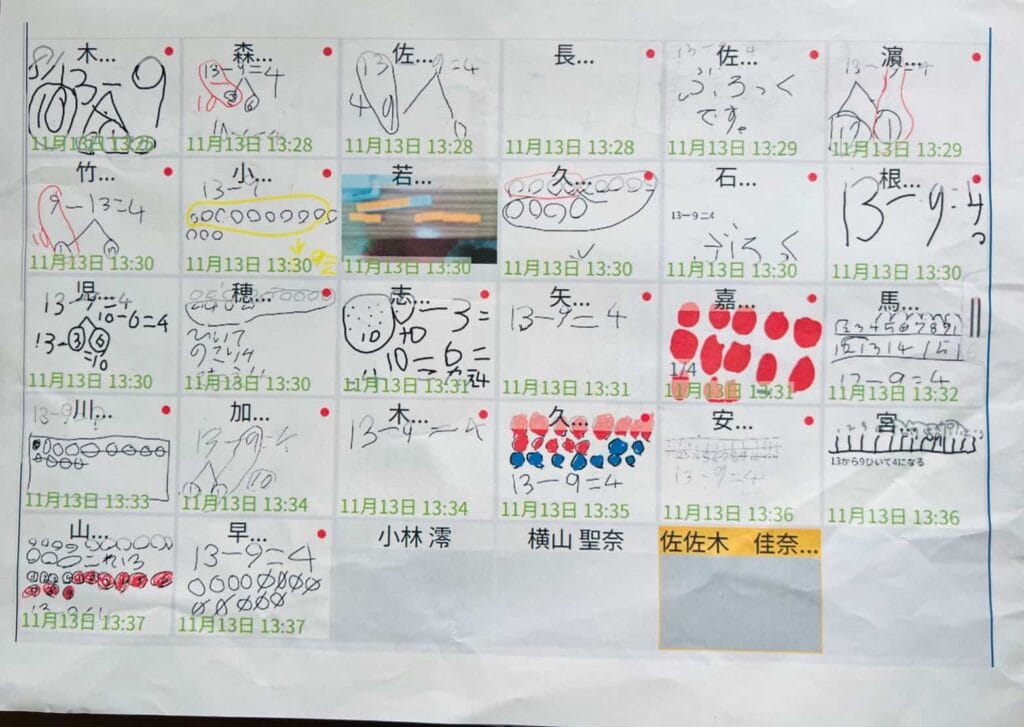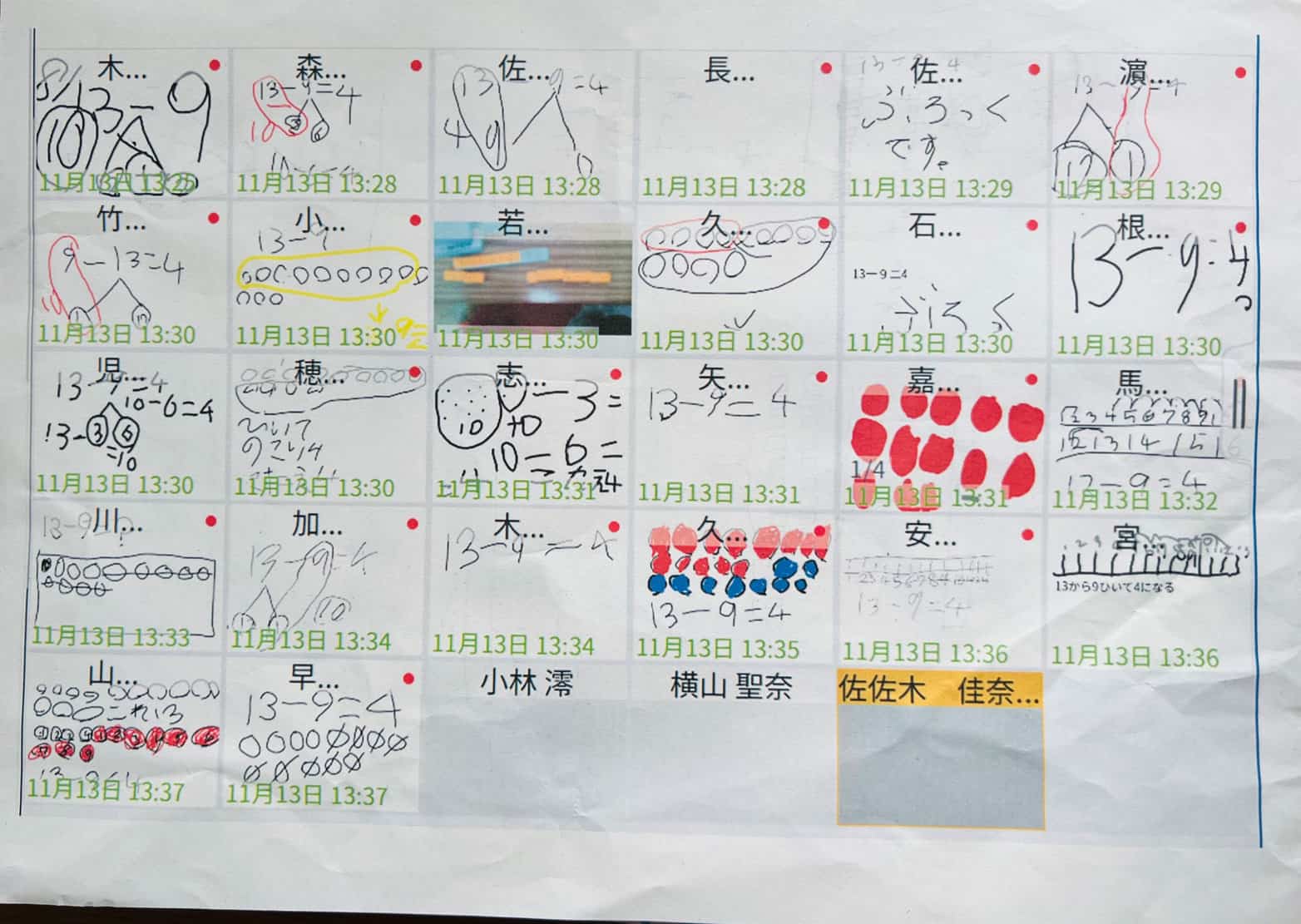Phil Daro was a lead author of the Common Core State Standards for Mathematics (CCSS-M) and works with teachers, districts, and developers to improve math teaching and learning. He has worked with SAP most recently on Math Milestones. He was invited by the Lesson Study Learning Alliance and Project IMPULS in Japan to spend 2 weeks visiting schools and engaging in workshops with Japanese and American mathematics educators focused on improving math teaching through Lesson Study. He shares his observations and work through this series.
First-grade class starts with this problem:
Naoka has 13 morning glory seeds. She plants [_] seeds. How many seeds does Naoka have left?
Can’t be answered until a number is put into [_]. The talk about it for a short time, and then teacher puts “1” into the box. Kids shout out, “12 left.” Teacher says, “You see, you already know how to do this one. Then, she puts a “3” in box. Again, students shout out, “10.” Teacher says, “You see how much you have learned?” She is highlighting assets from prior learning with collective response emphasizing the “we” of learning. Not an implied test but an affirmation. Any student who is uncertain gets the answer in the group response. Very quick.
This brings out the structure of the word problem so they understand the relations between the numbers and the operations, and they understand the basic structure of, in this case, a take-away problem. When you try putting different numbers in and getting different numbers coming out, it’s working like a function. This is very useful and beneficial to students.
The move: Pose a problem with numbers missing so an answer cannot be calculated yet, and then put in the easiest numbers, like 1, 2, or 3, into the box where the missing numbers are. Have students respond together as a class. Use the same word problem with different numbers. Declare affirmation that they have learned. Then, put in numbers they haven’t learned yet.
Now, she says, “I am going to put a number in that you haven’t learned yet. Think of ways you can answer the question with this number and write your way of finding the answer so other students can understand it. We will look at all the different ways.” She puts in the number 9. Says, “Think of a way to find the answer for numbers like this.”
They write ways of solving. Some explain two ways. Some pull out the blocks and count out 13 and physically take away 9. They photograph their blocks and submit photo to class share screen. Others draw 13 circles and color in 9. A few did one-to-one correspondence diagram: a row of 13 and an aligned row of 9. They drew lines connecting 9 from 9 row to 9 in the 13 row. Some used number “strings” like number lines and marked out 13 and counted back 9 hops, landing on 4. Others used decomposing number strategies: 13 ~ 10 +3, 9 ~ 6+3, the 3-3=0, 10-6=4. They used branching diagrams to show decompositions and equations to show calculations.

Almost all of the foundational concepts of counting and number, adding and subtracting numbers were explicitly used and diagrammed by someone. The teacher led discussion representing the decompositions and equations with blocks and circle diagram actions. This interpretation across representations brought the block and circle thinkers toward the decomposition and equation thinkers. From thinking with numbers that refer to counting order to think with numbers that refer to how many there are. This expansion of number sense from counting as order to number as magnitude is essential and neglected. This work is also foundational to place value…decomposing to 10+3.
The move: Compare different ways of thinking and representing to draw out the correspondences across the different ways and pull students along the progression of ideas.





